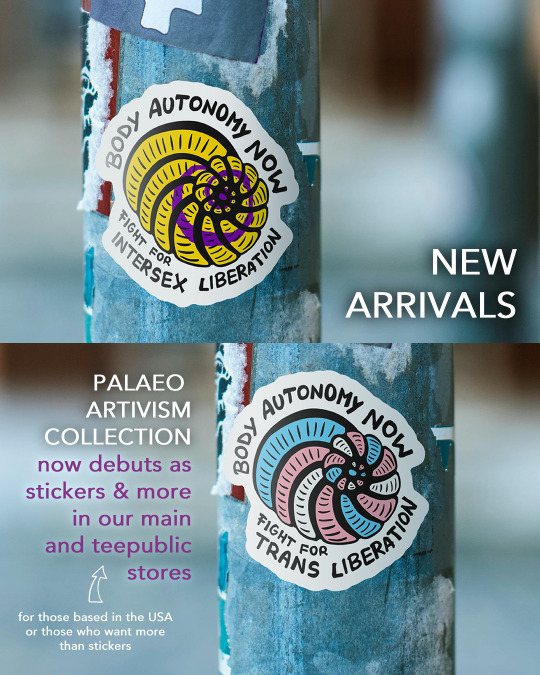#Peneroplis
Explore tagged Tumblr posts
Text

🌟✊ Join the movement for liberation with our debut Palaeo Artivist sticker collection where passion for paleontology meets the fight for liberation! 🌈📢
Featuring the iconic Peneroplis Foraminifera, shaped like a horn to symbolize the power of speaking loudly and boldly, these stickers are both a nod to Micropalaeontology and a call to action for Trans and Intersex liberation.
Dive into the intricate world of (micro)palaeontology while proudly displaying your support for trans and intersex rights. Our designs, adorned with the colours of the Transgender Pride and Intersex Pride flags, are a testament to the intersection of science and activism.
These stickers aren't just for personal use – they're meant to be seen and heard by all. Stick them on laptops, notebooks, water bottles, and all smooth public surfaces you can find to spark conversations and inspire others to join the fight for equality and justice.
Whether you're a student, scientist, palaeontology enthusiast, or ally, now is the time to stand up and make your voice heard. Let's create a world where everyone can live authentically and freely. Together, we can make a difference. ✊🏳️⚧️
GET THEM HERE: Etsy Store | Teepublic* *recommended for USA-based people and those interested in more than stickers
#Resistance And Liberation#Trans Rights#Intersex Rights#Trans Liberation#Intersex Liberation#Trans Stickers#Intersex Stickers#Palaeontology Stickers#Paleontology Stickers#Micropaleontology#Micropaleontology stickers#Trans Pride#Transgender Pride#Trans Rights Are Human Rights#Trans Rights Sticker#Intersex Rights Sticker#queer sticker#Transgender#Transgender Rights#Protest stickers#ProtestArt#LGBTQIA#Pride#LGBTQ Business#Queer Owned#Support Queer Business#Shop Queer#Resistance Art
17 notes
·
View notes
Photo

“In this photo of a shallow coral reef in the Pacific there are three species of forams. On the left, Peneroplis planatus. In the center, Amphistegina lessonii. And on the right, Laevipeneroplis sp. Their colors come from the symbiotic algae that live inside the foram shells. Just like corals, these forams are subject to bleaching when ocean temperatures get high enough to kill off the colorful algae.”
0 notes